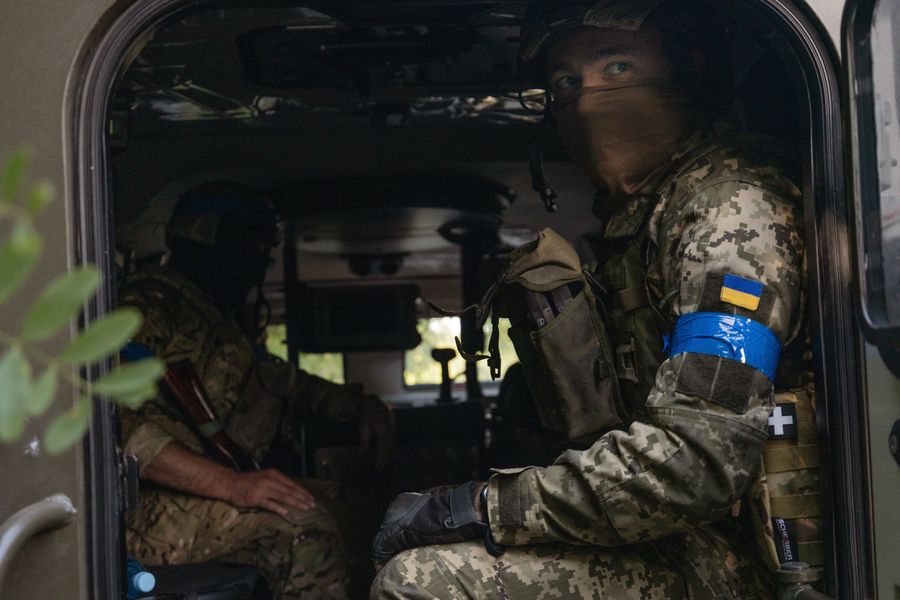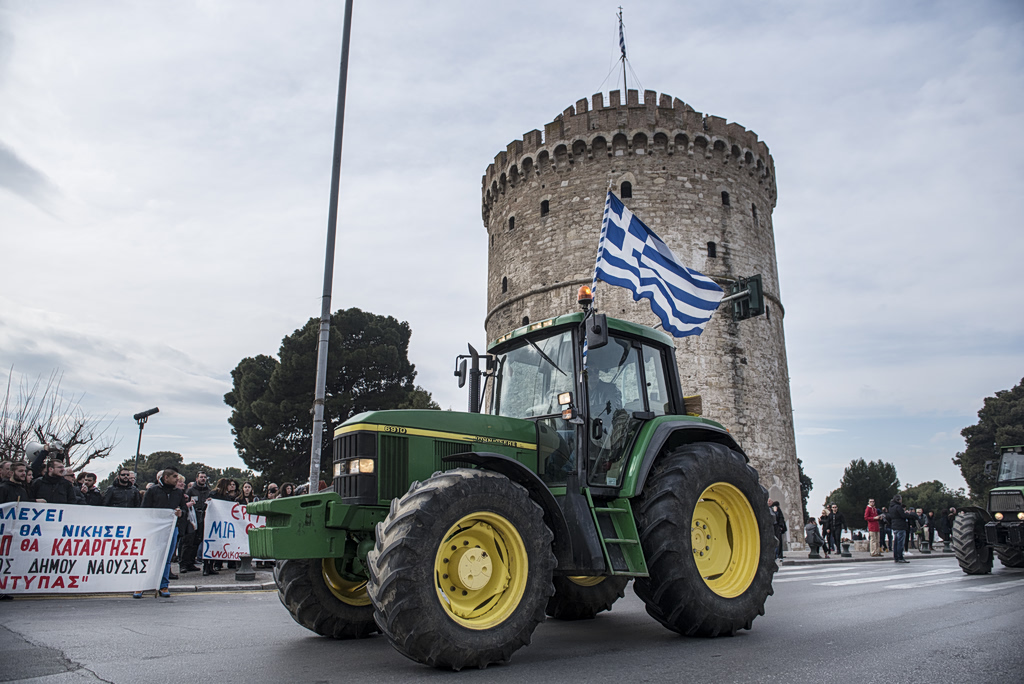In the spring of this year, Moscow’s new military appointee overseeing security in the Kursk province dismantled a council tasked with protecting the vulnerable border region. Col. Gen. Alexander Lapin said the military alone had the strength and the resources to protect Russia’s border, according to an official in Russian security services.
That plan left yet another hole in Russia’s weak border defenses, which crumbled earlier this month when Ukrainian troops executed a lightning offensive across the border into Kursk. Ukrainian troops crossed the border to find Russian troops in disarray. They surged ahead and now say they occupy more than 400 square miles of Russian territory.
To be sure, Lapin alone didn’t open the gates to the first foreign invasion of Russian territory since World War II. He was faced with a critical shortage of men . But his misstep is characteristic of a top brass often out of touch with battlefield realities, which now plagues Moscow as it seeks to oust Ukrainian forces from its territory.
Since the start of the war, Russia’s centralized, top-down thinking, one of the defining features of Russia under President Vladimir Putin , has backfired on the battlefield. It has hampered sober planning in the Kremlin, and when those plans have failed, it has prevented Russian forces from improvising to react to fast-moving developments.
“Putin’s power vertical is still in place but for now it’s working against Russian objectives on the ground,” said William Courtney , a former American diplomat and adjunct senior fellow at Rand. “And with Russia’s planning coming all from the top, its responses to unexpected, fast-moving events are incredibly impaired, with no one on the ground taking initiative.”
It is unclear whether the interagency council dissolved by Lapin, a body that combined military officers with local and regional security officials, would have helped organize a coherent response from Moscow. But without a centralized body in charge of Russia’s response, Moscow’s efforts to oust Kyiv’s forces have so far been chaotic and ineffective. That has left Russian security agencies such as the Interior Ministry and the Federal Security Service, which are in charge of domestic security, and Russia’s Defense Ministry, which is in charge of fighting inside Ukraine, jostling to lead the response.
“Russia is still pulling together its reaction to this incursion by Ukraine. There has been a fairly slow and scattered reaction to it,” said Gen. Christopher Cavoli , commander of the North Atlantic Treaty Organization, speaking at the Council on Foreign Relations on Thursday. “Part of that is because it wouldn’t exactly be clear who’s in charge.”
The Russian defense ministry didn’t respond to a request for comment. It hasn’t publicly issued an explanation for how it allowed Ukrainian forces to cross into Russian territory. Hours after Ukraine’s incursion, Russia’s chief of general staff, Gen. Valery Gerasimov , said Lapin’s forces and border guards were working “to destroy the enemy in areas directly adjacent to the Russian-Ukrainian border.”
Gerasimov hasn’t made any public appearances since the incursion.
The initial response is reminiscent of the first hours of the insurrection led by Yevgeny Prigozhin , who led the mercenary Wagner group in Ukraine. He sent his forces toward Moscow to unseat his rivals he blamed for Russia’s military problems—Gerasimov and the then-defense minister, Sergei Shoigu .
Despite days of signals that he was planning to launch an insurrection, the Kremlin was caught off guard and froze in the face of Prigozhin’s actions, said Courtney. Prigozhin, who ultimately halted the rebellion on its march toward Moscow, died two months later when his plane exploded midflight above Russia.
In the days leading up to Ukraine’s invasion, Russia’s military correspondents have said, Lapin’s command had sent reports to Moscow warning that Ukrainian forces were building their numbers on the front line. But the trick had been employed on both sides before as a tactic of psychological warfare, people familiar with border maneuvers said, and Moscow dismissed the warnings.
Regardless of the intelligence about military movements, troops under Lapin’s command still failed to act by enforcing defensive lines or laying mines as Russian soldiers had done last year to stymie a major and well-telegraphed Ukrainian counteroffensive. When Ukrainian soldiers entered the no-man’s-land between Ukraine and Russia, they were met with no resistance and, inside Russia, no territorial defense forces to help slow them down.
Ukrainian forces used electronic jamming to disable communications , leaving Russian forces unable to contact their commanders. Lightly armed Russian forces were trapped behind the front line and scattered into the forest. Some mounted localized resistance, ambushing Ukrainian forces who moved in to mop up behind the assault troops. But hundreds of Russian soldiers, many of them conscripts, just surrendered.
“In Moscow, they simply were not pondering that a scenario like this could happen,” said Konrad Muzyka , director of Poland-based Rochan Consulting, focusing on the Russian military.
The defensive planning was almost as disastrous as Russia’s initial invasion itself when military planners relying on faulty intelligence—and a belief that the Ukrainian military would crumble under a full-scale assault—sent armored columns into Ukraine in parade formation, making them easy targets for drones and antitank weapons.
Likewise, when the Ukrainian soldiers drove into Russia, their first armed resistance was from the 488th motor rifle regiment of the 144th motor rifle brigade, a unit consisting almost entirely of conscripts, who according to Russian policy aren’t supposed to fight inside Ukraine. The demands of the front had depleted the manpower and resources of Russia’s forces.
Under normal circumstances, they would have had around 120 armored vehicles, including tanks and armored personnel carriers. In their first armed encounter, the conscripts likely had between 10 and 20, said Muzyka.
It wasn’t the first time poor planning and a lack of men had come together under Lapin’s command. In early September 2022, Ukrainian forces launched a surprise attack in northeast Ukraine. Without the Russians having sufficiently fortified their thin front-line positions, Ukrainians blew past them using fast-moving field vehicles, followed by heavier armored echelons. Russia’s offensive line crumbled and Ukraine managed to reclaim thousands of square miles in northeastern Ukraine.
Following the debacle, Chechen strongman leader Ramzan Kadyrov called for his resignation: “I would demote Lapin to private, strip him of his awards and send him to the front lines with a machine gun.”
Some among Russia’s vocal military correspondents thought the criticism was unfair as Lapin had only recently been moved to the area where Russian lines collapsed. Nonetheless, the officer was soon removed from his post and later reappointed as deputy commander of Russia’s forces in Ukraine.
That fiasco caused the Kremlin to rethink its manpower problem, and a month later Russia started a general mobilization to shore up its thin defenses. Since then, the monetary incentives of contract service have kept volunteers coming into Russian draft offices at a rate of about 1,000 a day. That has kept Russia’s war machine chewing off bits of Ukraine in a grinding war of attrition, but high losses have cut away at strategic reserves, constraining how much manpower the Kremlin can now direct at Kursk.
Now, as Russia tries to gain an advantage on its own territory, it is bringing some forces from eastern Ukraine, even if that means taking away manpower from the front line. The bungled response showed that Ukraine’s incursion into Russian territory hit Moscow’s weak spot: contingency planning.
“It has certainly demonstrated the creativity and the battlefield prowess of the Ukrainians,” said Pentagon spokesman Maj. Gen. Pat Ryder . “They clearly have compelled the Russians to struggle in their response.”
Write to Thomas Grove at thomas.grove@wsj.com



